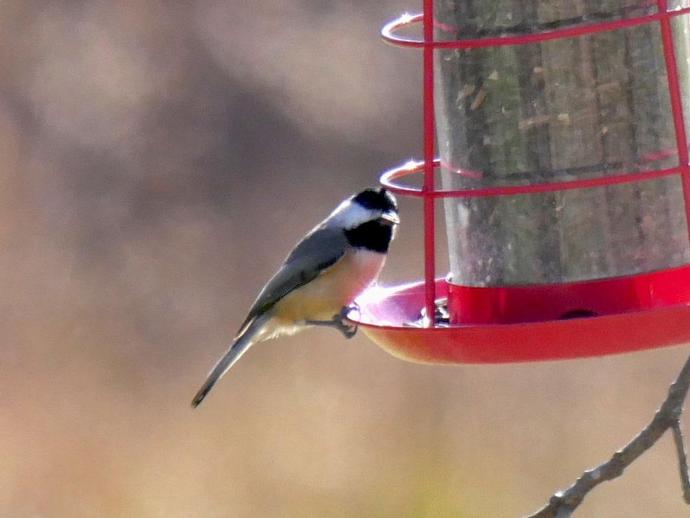December 9, 2020
Ben here with the Wednesday edition of #BenInNature! The Carolina chickadee (Poecile carolinensis) is a common sight at bird feeders, and it can be found throughout much of the southeastern U.S. If you live in the far western tip of Virginia, you might see an extremely similar-looking species: the black-capped chickadee (Poecile atricapillus). While the Carolina chickadee is limited to the southeastern U.S., the black-capped chickadee can be found in the midwest and northern U.S., ranging up into Canada and Alaska (although its range has an odd little spike that follows the Appalachian mountains down into North Carolina).
How to tell the difference between the two birds? It isn't easy, but black-capped chickadees have a little bit more white on their wings and slightly longer, more squared-off tails. These two species are so similar-looking that even they have a hard time telling each other apart! In areas where their ranges overlap, the two species will frequently hybridize. Interestingly, Carolina chickadees have a four-note song, black-capped chickadees have a two-note song, and the hybrids have a three-note song!
Carolina chickadees mostly feed on insects in the spring and summer, but once winter arrives, seeds and berries make up the bulk of their diet. These birds are year-round residents and despite their tiny size, they're pretty tough. When the weather gets extremely cold, they will seek shelter and lower their body temperatures to enter a state known as "torpor." Their metabolism will drop allowing them to conserve precious energy. They can spend as much as 15 hours in a state of torpor. If you happen to find a Carolina chickadee in such a state, don't pick it up and handle it, as the stress may be too much for it.
ABOUT #BenInNature
Social distancing can be difficult, but it presents a great opportunity to become reacquainted with nature. In this series of posts, Administrator of Science Ben Williams ventures outdoors to record a snapshot of the unique sights that can be found in the natural world. New updates are posted Monday - Friday, with previous posts highlighted on the weekends.
NEW: TRIVIA CHALLENGE
You've seen the posts. You've learned the facts. Now, it's time to prove you are a #BenInNature Mega Fan! The museum's education team has developed the #BenInNature Trivia Challenge to identify the most devoted fans out there! Everyone who successfully answers each trivia question correctly will be congratulated by having your own nature selfie posted to the museum's #BenInNature Mega Fan Photo Album on the official VMNH Facebook page! Learn more and download the trivia challenge today by visiting www.vmnh.net/research-collecti.../beninnature-trivia-challenge.
NATURE PHOTO IDENTIFICATIONS
If you discover something in nature that you would like help identifying, be sure to message us right here on Facebook with a picture (please include location and date of picture) and we'll have our experts help you identify it!

 Hours & Admissions
Hours & Admissions Directions
Directions

